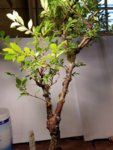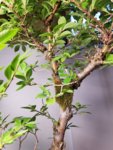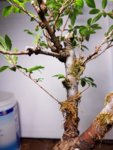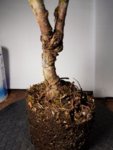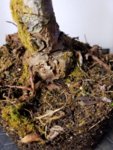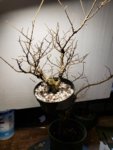erb.75
Chumono
I have purchased from Ken on various occasions. This is not a standard Chinese elm. I think it is some sort of cork bark elm. The material Ken sells is great for the price (IMO). It allows new people to have access to bonsai specific material vs. your big box store. Most of the material Ken sells that is less than $50 needs serious work to be an outstanding bonsai. But without people like Ken, it would be a lot more difficult to get ahold of cultivars that are great for bonsai, especially for people who are most interested in trees under $500. I'd say the most important thing is that you got a species that will be great for bonsai. If it were mine, I'd wait until next spring and air layer it off to make a twin trunk.
You could dig down a tiny bit to see if there are any interesting roots on the surface. Most Chinese elm varieties do not have good roots, at least without a lot of work. You could also ground layer it, let it grow wild (in the ground is even better) for a couple of years, and you'd have the good workings of a great species for bonsai. Elms are so nice because they develop and look really good in a short amount of time!
You could dig down a tiny bit to see if there are any interesting roots on the surface. Most Chinese elm varieties do not have good roots, at least without a lot of work. You could also ground layer it, let it grow wild (in the ground is even better) for a couple of years, and you'd have the good workings of a great species for bonsai. Elms are so nice because they develop and look really good in a short amount of time!


